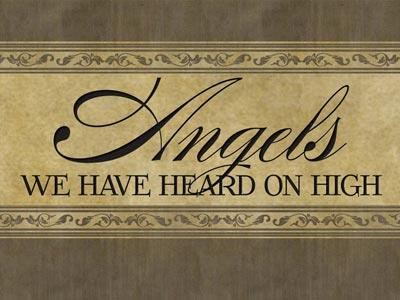-
Oh Holy Night Series
Contributed by K. Edward Skidmore on Nov 28, 2017 (message contributor)
Summary: This devotional talk about the song, Oh Holy Night tells some surprising things about the origin and usage of this most familiar Christmas song.
Oh Holy Night
CHCC: December 24, 2008 (Christmas Eve Devotion)
INTRODUCTION:
Merry Christmas! Tonight I want to talk about one of the best known Christmas Anthems of all time. It’s not an easy song to sing, but it has been performed all over the world … for over 150 years. This song has several distinctions including being banned in France, influencing a political movement in America, and marking a technological revolution that would change the way people listen to music.
The story of this song began in the 1840’s in France when a Priest asked a poet named Placide Cappeau de Roquemaure to write a poem for Christmas Mass. Cappeau composed this poem while he was in a carriage on the road to France … and that he titled Cantique de Noel.
Cappeau was so inspired by his own Poem that he asked a well-known classical musician named Adolphe Charles Adams to compose a musical score for it. The song that we call “O Holy Night” was performed just three weeks later on Christmas Eve. At Midnight Mass … in an obscure French Village … a choir celebrated Jesus’ birth with these words:
1. View from Above vs. 1
O holy night! The stars are brightly shining,
It is the night of the dear Saviour’s birth.
Long lay the world in sin and error pining.
Till He appeared and the soul felt its worth.
A thrill of hope the weary world rejoices,
For yonder breaks a new and glorious morn ….
Here we see the birth of Christ from a Heavenly viewpoint … a birth that awakened the whole world … a birth that brought a new and glorious morn to everyone on earth.
Placide Cappeau was an unlikely man to write these beautiful lyrics. He was a wine merchant who was known more for his Poetry than his Church attendance … and in later years he broke with the Church entirely to join the Socialists Movement in France.
The Music Composer was also an unlikely man to write music for this poem. Adolphe Adams was of Jewish ancestry. He composed this music to celebrate a Holiday he didn’t observe … and a Messiah he didn’t accept.
When the Church Leaders in France learned these facts, they officially banned the song as “unfit for church services.” But it was too late! O Holy Night had already become one of the most beloved Christmas songs in France --- and no matter what the Church Leaders decreed --- the French people kept singing it. You see, even though the composers may not have believed what they wrote, they had produced a masterpiece that was true to the Gospel message.
The second stanza of this song moves from a Heavenly View of Jesus’ birth to the lowly view at the Manger:
2. View from the Manger vs. 2
Led by the light of faith serenely beaming,
With glowing hearts by His cradle we stand.
O’er the world a star is sweetly gleaming,
Now come the wise men from out of the Orient land.
The King of kings lay thus in lowly manger;
In all our trials born to be our friend …
Cappeau put himself in the sandals of the wise men who followed the Star. He imagined how they stood with glowing hearts as they beheld the miracle of a King lying in a lowly manger.
Years later, the Song itself would be seen as a sort of Miracle. On Christmas Eve in 1906, a 33-year-old University Professor named Reginald Fessenden did something most of the world thought was impossible. Using a new type of Generator, this Professor (who had worked earlier with Thomas Edison) – spoke into a microphone --- and for the first time in history, a man’s voice was broadcast over the airwaves.
Shocked radio operators in ships --- and wireless operators at newspaper offices --- jumped up in amazement. They were used to hearing coded “bleeps” over tiny telegraph speakers --- but all of a sudden, they heard a clear, deep voice speaking these words …
And it came to pass in those days, that there went out a decree from Caesar Augustus that all the world should be taxed … And Joseph also went up from Galilee, out of the city of Nazareth, into Judea, unto the city of David, which is called Bethlehem … Luke 2:1,4
Professor Fessenden went on to read the entire chapter from the Gospel of Luke. He probably had no idea that he was causing an uproar! All over the area, Men and women were rushing to wireless units to hear what many thought was a CHRISTMAS MIRACLE. Some even believed they were hearing the voice of an Angel.
When the Professor finished reading, he picked up his Violin and played a beautiful Christmas melody. And on that Christmas Eve “O Holy Night” became the first song ever sent though the air by radio waves. From that time on, people all around the world would have a new way of listening to music.

 Sermon Central
Sermon Central



